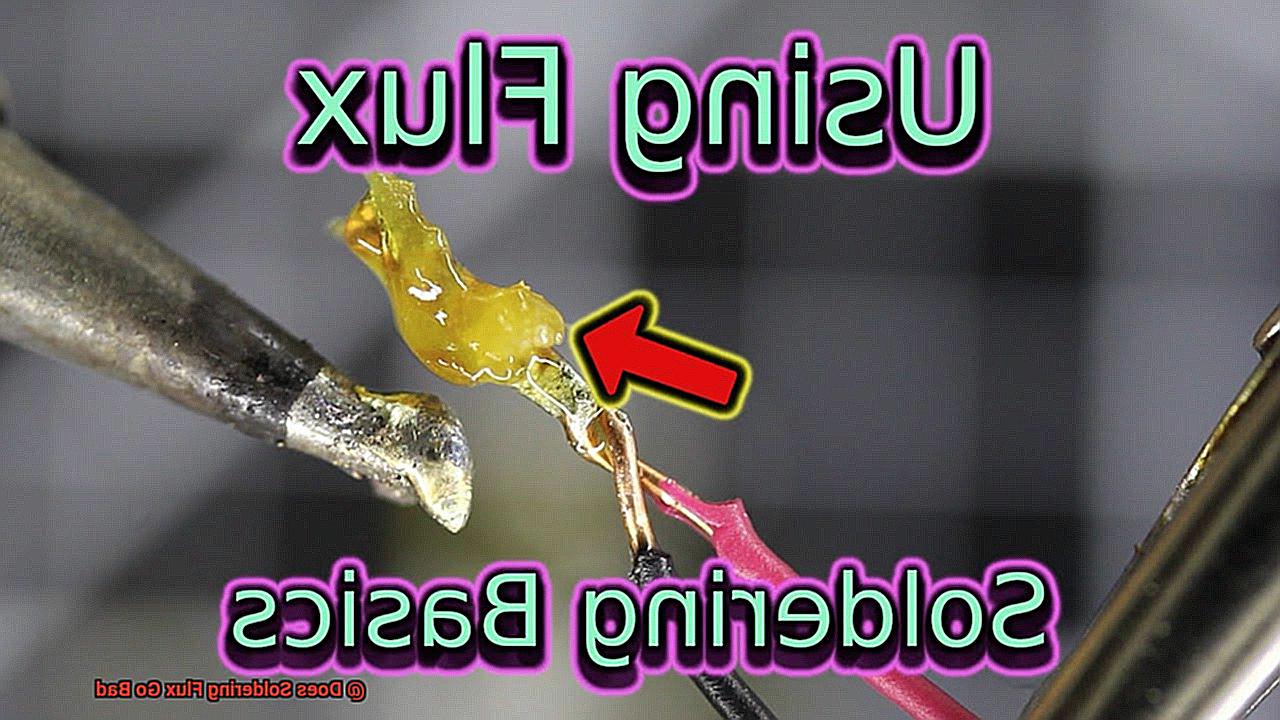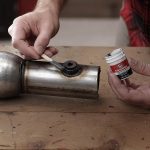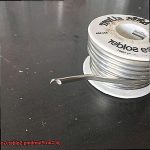Are you a DIY enthusiast or a professional technician who relies on soldering flux for successful soldering? If so, you may be wondering if your trusty flux can go bad or expire. The answer is yes, just like any other chemical, soldering flux can deteriorate over time if not stored and handled correctly.
But what does ‘bad’ mean in terms of soldering flux? Does it still work, or does it become completely useless? In this blog post, we’ll delve into the world of soldering flux to explore the signs that indicate your flux has gone bad and how to extend its shelf life.
Using fresh and effective soldering flux is crucial for achieving clean, smooth, and secure solder joints. That’s why we’ll provide you with some steps you can take to determine whether your soldering flux is still good or not.
So, let’s get started.

What is Soldering Flux?
Contents
Soldering is an art form that requires careful attention to detail, the right tools, and a deep understanding of the materials being used. At the heart of this process lies soldering flux – a chemical compound that plays a vital role in achieving a strong and long-lasting bond between two pieces of metal.
So, what exactly is soldering flux? Put simply, it’s a magical substance that makes the impossible possible. It works by removing any oxidation present on the surface of the metal, which can interfere with the flow of molten metal and weaken the bond. Without it, your soldering project would be doomed to fail.
Soldering flux comes in three forms: paste, liquid, or powder. The type of flux used can vary depending on the type of metal being soldered and the specific application. Rosin flux is the most common type and is made from natural rosin extracted from pine trees. Water-soluble flux is designed to be easily removed with water after the soldering process is complete, while no-clean flux leaves little to no residue and does not require cleaning.
But why is applying soldering flux so important? Well, without it, your solder joint may be weak or prone to failure over time. The process of applying flux before heating and joining the metal surfaces is critical to ensure proper bonding and prevent oxidation. In other words, it’s like giving your project a superhero cape – it makes it stronger and more resilient.
However, like any other chemical agent, soldering flux can go bad over time. Its shelf life depends on its type, storage conditions, and exposure to air. Most soldering fluxes have a shelf life of one year, but some can last up to three years if stored correctly. That’s why it’s important to store it in a cool, dry place away from direct sunlight and sources of heat.
Soldering flux is an essential component in the soldering process that ensures proper bonding and prevents oxidation. Choosing the right type of flux and storing it correctly can make all the difference in achieving a successful soldering project. So, next time you’re soldering, remember the importance of soldering flux and use it to achieve a strong and long-lasting bond between two pieces of metal.
How Long Does Soldering Flux Last?
Soldering flux is the unsung hero of the soldering process, ensuring a strong and reliable bond between metal surfaces. But like any hero, even this crucial component has a shelf life. So, how long does soldering flux last exactly? Let’s dive into the details.
The lifespan of soldering flux depends on several factors, including the type of flux, storage conditions, and frequency of use. There are different types of soldering flux available in the market, such as water-soluble flux, no-clean flux, and rosin flux. Each type of flux has its own specific shelf life, which typically ranges from six months to one year when stored correctly. To ensure that your flux lasts as long as possible, it’s crucial to check the manufacturer’s recommendations for storage and usage.
The storage conditions of soldering flux can significantly impact its lifespan. To maintain its effectiveness, it should be stored in a cool and dry place, away from direct sunlight and moisture. Exposure to heat and humidity can cause the flux to deteriorate quickly. Therefore, it’s essential to keep the container tightly sealed when not in use to prevent air and moisture from entering.
Another factor that determines how long soldering flux lasts is its frequency of use. If you use it regularly, you may need to replace it more often than if you only use it occasionally. As you use the flux, oxides and impurities from the solder joint can contaminate it, reducing its effectiveness over time.
Factors that Affect the Shelf Life of Soldering Flux
Soldering flux is an essential component of the soldering process, and its effectiveness is determined by several factors that can impact its shelf life. The shelf life of soldering flux refers to the period during which the flux can maintain its effectiveness, enabling it to be used for successful soldering tasks.
The type of flux being used is a crucial factor that affects the shelf life of soldering flux. There are various types of soldering flux available in the market, including water-soluble flux, no-clean flux, and rosin-based flux. Each type has a different shelf life, making it essential to know how long each type lasts to ensure that you’re using effective flux.
Storage conditions also play a significant role in determining the effectiveness of soldering flux. Soldering flux should be kept in a cool, dry place, away from direct sunlight and sources of heat. Exposure to heat and moisture can lead to changes in the chemical composition of the flux, causing a decrease in its effectiveness.
The age of the soldering flux is another important factor that influences its shelf life. As time passes, the chemical composition of the flux may change, leading to a reduction in its effectiveness. Checking the date of manufacture before using any soldering flux is crucial to ensure that it’s still within its shelf life.
Finally, the type of metals being soldered can also affect the shelf life of soldering flux. Some metals are more reactive than others and may require specific types of flux or may require more frequent replacement of the flux.
It’s critical to understand the requirements of the metals being soldered and select the appropriate type of flux accordingly.
Storage Conditions for Soldering Flux
Soldering flux is a chemical compound that can easily react with moisture, air, or other compounds if not stored in the right way. So, let’s dive into what you need to know about the ideal storage conditions for your soldering flux.
To keep your soldering flux safe and effective, it should be stored in a cool, dry, and dark place. Avoid areas that are exposed to sunlight or heat sources such as windows, radiators, or hot surfaces. Heat and UV light can quickly break down the flux, causing it to lose its effectiveness.
Keeping the container tightly sealed is another important factor. Moisture can cause the flux to deteriorate and become sticky which will negatively impact its performance. Therefore, make sure to store your soldering flux in a sealed container to prevent moisture from entering.
Lastly, it’s vital to keep your soldering flux away from other chemicals as much as possible. Exposure to other chemicals can cause the flux to react or change its composition, leading to unforeseen effects on its performance.
Exposure to Air and Soldering Flux
When left exposed to air, soldering flux can accumulate moisture and other harmful particles, leading to corrosion on the metal surface being soldered. This can ultimately result in weak joints and poor adhesion.
Thankfully, there are ways to prevent this from happening. Storing your flux in an airtight container when not in use is one of the most effective ways to keep moisture and other contaminants at bay. By doing so, you can ensure that your flux remains effective for as long as possible.
But that’s not all. Heat exposure during the soldering process can also impact the quality of your flux. High temperatures can cause flux to break down and lose its effectiveness, causing weak joints and poor adhesion.
To avoid this, it’s crucial to select the right type of flux for your specific soldering job. Different types of flux are designed to work at different temperatures, so be sure to choose the appropriate one for your needs.
So, while soldering flux doesn’t necessarily “go bad,” its effectiveness can be greatly impacted by exposure to air and heat. By properly storing your flux and selecting the right type for your task, you’ll ensure that your soldering projects are strong and long-lasting.
Conclusion
To sum it up, soldering flux is a fundamental ingredient in achieving successful soldering projects. Nevertheless, its effectiveness can be compromised over time if not handled and stored correctly. The lifespan of your flux depends on multiple factors such as its type, storage conditions, and frequency of use. Therefore, it’s crucial to adhere to the manufacturer’s recommendations for storage and usage to ensure that your flux remains potent.
Factors like air exposure and heat can significantly affect the quality of your soldering flux. Exposure to air can lead to moisture accumulation, which causes corrosion on the metal surface being soldered. High temperatures during the soldering process can also cause flux to break down and lose its effectiveness.
To avoid these issues from happening, you must store your flux in a cool and dry place away from direct sunlight and sources of heat. Keeping the container tightly sealed when not in use will prevent air and moisture from entering. Moreover, selecting the right type of flux for your specific task will guarantee optimal performance.
By following these simple guidelines, you can extend the shelf life of your soldering flux and achieve strong and long-lasting solder joints every time. Remember that proper storage conditions are necessary for keeping your soldering projects successful.





